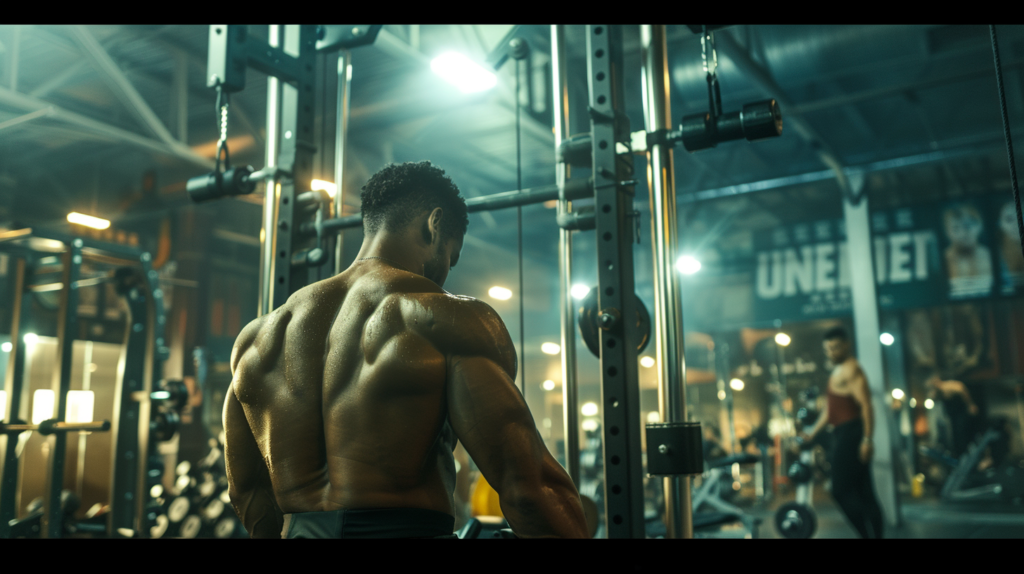If you want to elevate your chest workout, I’m here to guide you! Start with the essentials like the flat and incline bench presses to build strength effectively. Don’t overlook cable crossovers for versatility and proper engagement. Remember, technique matters—focus on mastering forms to avoid injuries. Keep your workouts balanced with adequate recovery; listening to your body is vital. I also recommend mixing in variations and adjusting angles to hit all chest fibers. Trust me, there’s a lot more to explore that can supercharge your routine for impressive results!
Key Takeaways
- Prioritize proper form in exercises like the flat and incline bench press to maximize muscle engagement and reduce injury risk.
- Incorporate a variety of movements, including cable crossovers and pec deck, to target different chest fibers and promote muscle growth.
- Use progressive overload by gradually increasing weights or resistance to continuously challenge your chest muscles.
- Allow for adequate muscle recovery and rest days to facilitate strength gains and prevent burnout.
- Experiment with different angles and equipment, such as dumbbells or barbells, to keep workouts fresh and effective.
Jeff Cavaliere’s Background

When diving into the world of fitness, it’s hard to overlook Jeff Cavaliere‘s impressive background. As a former head physical therapist and assistant strength coach for the NY Mets, Cavaliere’s credentials speak volumes about his expertise.
His fitness philosophy emphasizes the importance of proper form and technique, ensuring that every rep counts toward your goals. I admire his mission to optimize chest workouts, making them safe and effective for everyone, regardless of fitness level.
Top Chest Exercises to Include

To build an impressive chest, incorporating the right exercises is vital. I’ve found that exercises like the Flat Bench Press and Incline Bench Press are essential for muscle activation and developing strength.
The Pec Deck is fantastic for targeting those chest fibers directly, while Cable Crossovers add versatility to my routine. By varying my workout frequency, I guarantee my chest muscles are continually challenged and engaged.
The Underhand Bench Press enhances upper chest stimulation, making it a worthwhile addition too.
Exercises to Avoid
@ Midjourney AI Image Prompt: /imagine prompt:A dimly lit gym with a lifeless bench press and poorly positioned dumbbells, showcasing a frustrated person demonstrating improper form, surrounded by faded posters of effective chest workouts, emphasizing the importance of avoiding bad techniques. –v 6 –ar 16:9
While it’s tempting to try every exercise available, some just don’t provide the results we seek or could even lead to injury.
Let’s debunk a few exercise misconceptions. For instance, the Crossover V-Variation lacks the resistance necessary for effective adduction; it’s best left out. The Guillotine Press can strain your elbows, making it a risky choice.
Bench Flys? There are better options out there. While weighted dips may seem appealing, they often don’t isolate the chest effectively.
Always focus on injury prevention—master bodyweight dips before adding weight.
Important Training Considerations

Choosing the right exercises is just the first step in building a powerful chest; it’s equally important to contemplate how you train.
I’ve learned that muscle recovery is vital, so allow your chest adequate time to heal between sessions. Striking the right balance is key; I aim for a training frequency that challenges me without leading to burnout.
Remember, it’s not just about pushing harder but also about training smarter. Incorporate a variety of movements to keep your muscles engaged and avoid plateaus.
Listen to your body—if you feel fatigued, don’t hesitate to take an extra day off. Embrace this journey, and you’ll not only build strength but also achieve the liberation that comes from mastering your own body.
Techniques for Effective Workouts

Effective workouts hinge on a blend of technique, focus, and the right mindset. To truly elevate your chest training, embrace progressive overload. This means gradually increasing the weights or resistance you use, ensuring your muscles are continually challenged.
I’ve found that maintaining proper form throughout each rep is essential; it maximizes muscle engagement while minimizing injury risks. Don’t overlook the importance of muscle recovery, either. Give your body the time it needs to heal and grow stronger.
Incorporate rest days and active recovery techniques, like light stretching or mobility work, to enhance your performance. Remember, every rep counts, and each workout is a step towards your goals. Stay dedicated, and you’ll access your full potential in no time!
Variations for Optimal Results

I often find that incorporating variations into my chest workouts can lead to ideal results and prevent stagnation. By mixing up my routine, I experience the variations benefits that come from targeting different muscle fibers and avoiding plateaus.
For instance, switching between barbell and dumbbell exercises can greatly enhance exercise intensity. I also love adjusting angles—like using incline or decline presses—to stimulate my upper or lower chest more effectively.
These changes not only keep my workouts fresh but also empower me to push my limits and achieve greater muscle growth. Embracing variations is crucial to revealing your full potential, so don’t hesitate to experiment and discover what works best for you!
Sample Chest Workout Routine

A solid chest workout routine is key to building strength and muscle definition, and I’ve put together a sample plan that balances intensity with safety.
Start with the flat bench press for 4 sets of 6-8 reps; it’s fantastic for strength. Then, move to the incline bench press for 3 sets of 8-10 reps to target your upper chest.
Follow up with cable crossovers, aiming for 3 sets of 10-12 reps to enhance muscle engagement. Finally, finish with the pec deck for 2 sets of 12-15 reps, focusing on controlled movements.
This balanced approach helps you push your limits while prioritizing form and safety—essential for achieving the chest you’ve always desired.
Let’s elevate your chest workout together!
Frequently Asked Questions
How Often Should I Train My Chest for Optimal Results?
When it comes to chest workout frequency, I’ve found that training my chest twice a week yields ideal results.
This schedule allows me to push hard while giving my muscles enough time to recover. I mix in various exercises to keep things fresh and engaging.
Remember, consistency is key, but listening to your body is essential too.
With the right training schedule, you’ll access your potential and see amazing growth!
What Are the Signs of Overtraining My Chest Muscles?
When I notice signs of overtraining my chest muscles, like persistent muscle fatigue, I know it’s time to reassess my routine.
That exhaustion can hinder my progress and increase my risk of injury. I focus on recovery strategies, like incorporating rest days and adjusting my workout intensity.
Listening to my body is key; I aim for balance and proper recovery, ensuring my chest gets the attention it needs to grow stronger and healthier.
Can I Combine Chest Workouts With Other Muscle Groups?
Absolutely, I love combining chest workouts with other muscle groups! It creates a fantastic synergy, especially when using superset techniques.
For instance, pairing bench presses with tricep extensions not only saves time but also maximizes muscle engagement. I find that this approach keeps my workouts dynamic and challenging.
Plus, it helps prevent plateaus, allowing me to break through barriers and achieve my fitness goals. Embrace the freedom of mixing it up!
What Is the Best Time of Day to Work Out My Chest?
I’ve found that the best time to work out my chest really depends on my energy levels.
Morning workouts can kickstart my day, giving me a sense of accomplishment.
However, I also love hitting the gym in the evening when I feel more energized.
It’s all about what feels right for you.
Listen to your body, and choose the time that empowers you to push through those reps and achieve your fitness goals!
How Do I Track My Progress in Chest Training Effectively?
Tracking my progress in chest training has been a game changer. I use workout journals to note my weights, reps, and how I feel after each session.
This way, I can see where I improve and adjust my goals. I also take progress photos to visually capture my journey.
It’s exciting to witness my growth, and it keeps me motivated. Remember, celebrating small victories is essential for long-term success!













